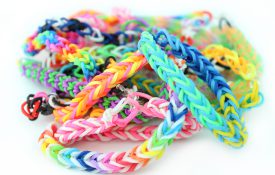-
Understanding How Children Develop Empathy
The New York Times: The mother was trying to hold the baby still, and I was pulling gently on the ear, angling for a better look at the infant’s eardrum. The wriggling baby didn’t like any of it, and her whimpering quickly turned to full-fledged wails. Suddenly the baby’s 3-year-old brother, an innocent bystander in no danger of having his own ears examined, began to wail as well, creating the kind of harmonic cacophony that makes passers-by wince in recognition. And the poor mother, her hands full, could only look over and reassure him: Your sister is O.K., don’t worry, don’t feel bad. ...
-
Who’s most susceptible to PTSD?
Pacific Standard: Franklin D. Roosevelt, the president who led the United States into the depths of total war and back out again, has a little-visited memorial on the far side of the Tidal Basin in Washington, D.C. It’s private and reflective, like the man himself, and chiseled into the rough stone are these words, from a Chautauqua speech made three years before the German invasion of Poland: “I have seen war. I have seen war on land and sea. I have seen blood running from the wounded… I have seen the dead in the mud. I have seen cities destroyed… I have seen children starving. I have seen the agony of mothers and wives.
-
Moral values and the fiscal cliff
The Washington Post: The fiscal cliff negotiations remind us of the long-running game show “Beat the Clock.” Couples had to perform a stunt, such as tying their shoelaces together using only their left hands, before a large clock ticked down to zero. The host would often introduce a twist at the last minute, something like, “Oh, and one more thing, you have to do this while members of the audience throw tomatoes at you.” President Obama and House Speaker John Boehner must do something far harder than tying their shoelaces together before the clock ticks down to January 1. They have to reach a deal themselves, and then convince majorities in the House and Senate to go along.
-

Too Big or Just Right? Optimal Circle of Friends Depends on Socioeconomic Conditions
Some people like to have a few close friends, while others prefer a wider social circle that is perhaps less deep. Research suggests that the optimal approach may depend on socioeconomic conditions. Visit Page
-
A Long-Term Approach to Studying Antisocial Behavior
Some people respond to life’s pressures by engaging in criminal behavior; others don’t. Psychological scientists are trying to figure out why criminals are different, but much of the existing research that connects personal characteristics to antisocial behavior has measured personality and behavior simultaneously, making it difficult to establish a causal relationship. A longitudinal study of Estonian adolescents that was recently published in the European Journal of Personality may be an important addition to the literature on antisocial behavior.
-
My, What Big Teeth You Have! Threatening Objects Appear Closer
When we're faced with things that seem threatening, whether it’s a hairy spider or an angry mob, our goal is usually to get as far away as we can. Now, new research suggests that our visual perception may actually be biased in ways that help motivate us to get out of harm’s way. Our bodies help us respond to threats by engaging our fight-or-flight response and enabling us to act quickly: Our heart rate and blood pressure ramp up, and we produce more of the stress hormone cortisol. But research suggests that the body may also demonstrate its preparedness through certain perceptual biases.

